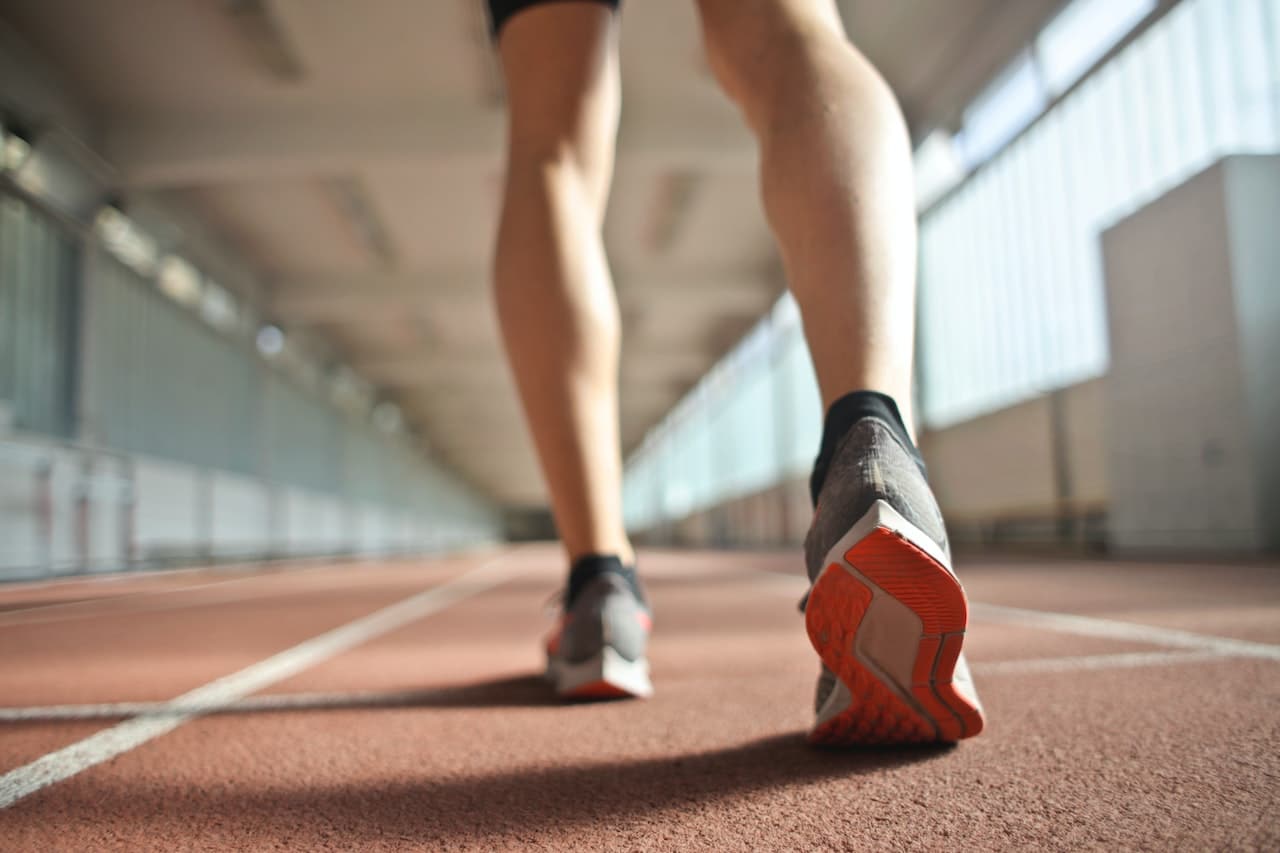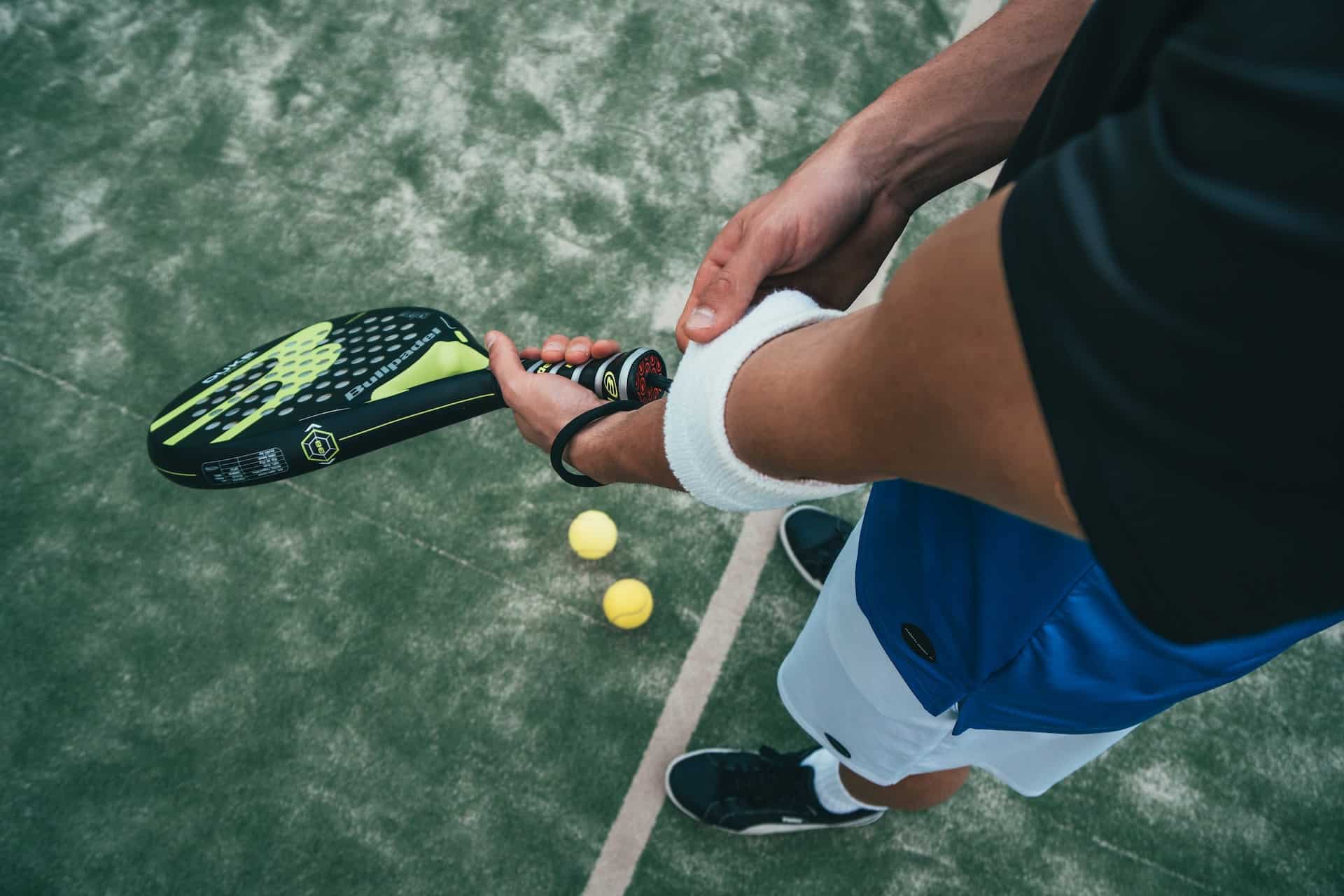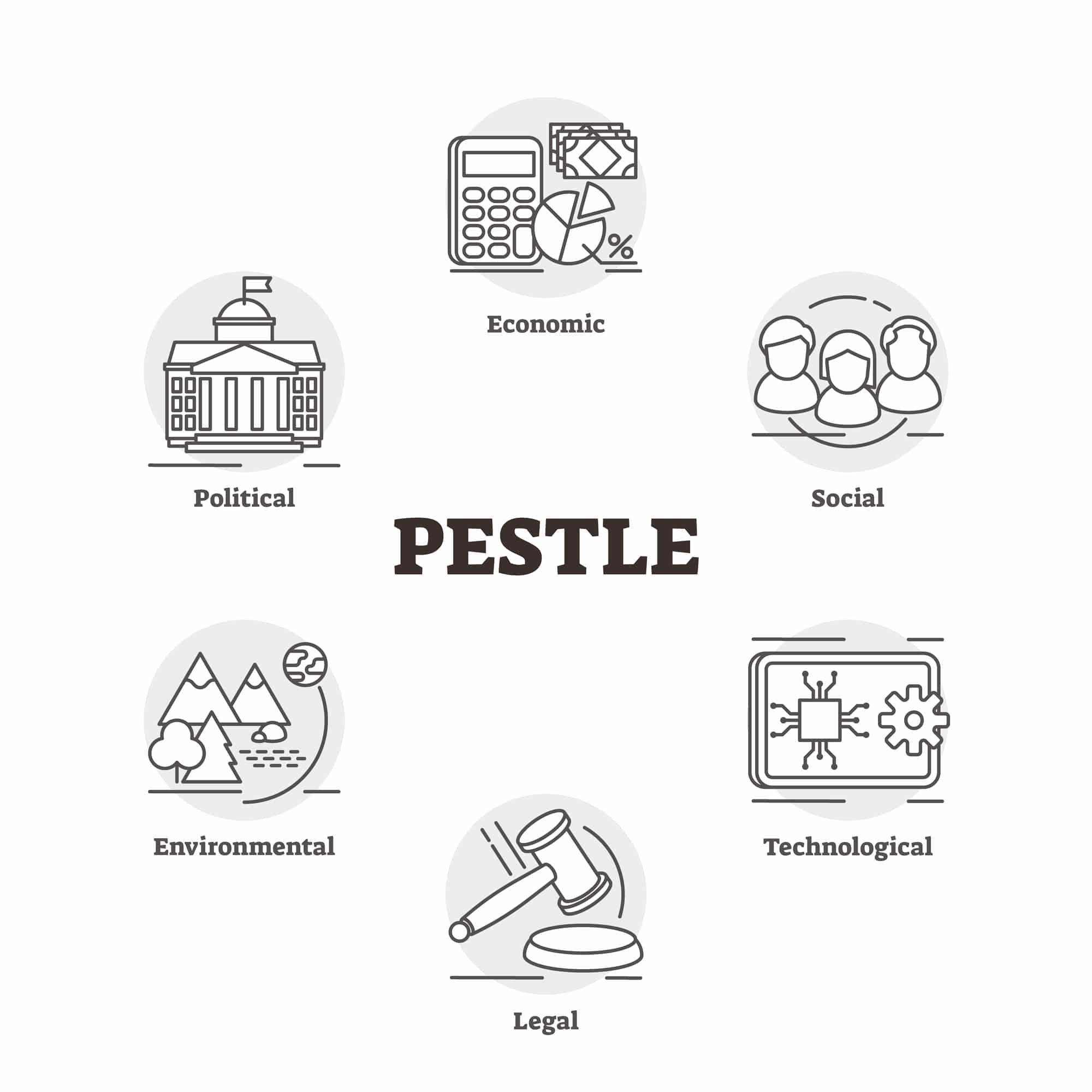Are you a sports enthusiast looking to invest in the sportswear industry? Or perhaps you're an entrepreneur planning to launch a new athletic apparel line?
Before making any moves, it's important to understand the external factors that can impact the industry. To do that, today, we have decided to conduct the PESTLE Analysis of the Sportswear Industry.
By examining the political, economic, social, technological, legal, and environmental factors affecting the sportswear industry, you can gain insights into the market and make informed decisions.
In this article, we'll explore these factors and their potential impact on the industry so that you can stay ahead. However, before we conduct the PEST analysis, we need to know the sportswear industry and how it has evolved over the years.
The history of the sportswear industry dates back to the late 19th century when people began to participate in various sports and physical activities for leisure and competition.
As the popularity of sports grew, so did the demand for specialized clothing and equipment. This led to the emergence of companies specializing in the production of sportswear.
In the early 20th century, sportswear was primarily made of natural fibers such as wool and cotton. However, with the advent of synthetic materials like nylon and polyester in the 1940s, sportswear became more lightweight, durable, and functional.
During the 1960s and 1970s, sportswear became more fashionable for athletic and casual wear. For example, the jogging suit made famous in Rocky became a cultural phenomenon and a symbol of the growing fitness movement.
In the 1980s and 1990s, sportswear companies began to focus on marketing and branding their products, with endorsements from high-profile athletes becoming a key strategy.
For example, Nike signed Michael Jordan to a multi-million dollar endorsement deal, which helped to boost the company's sales and brand recognition.
Today, sportswear is a multi-billion dollar global industry, with companies like Nike, Adidas, and Under Armour dominating the market.
Sportswear has also become a part of mainstream fashion, with athletic-inspired clothing and footwear worn by people of all ages and backgrounds.
The industry continues to evolve, focusing on sustainable and ethical production methods, technological advancements, and innovation.
Now that we have discussed the history of the sportswear industry let's proceed further and discuss what PESTLE analysis is.
PESTLE analysis is a tool widely used by businesses and organizations to assess what external factors impact the businesses operating in a certain industry.
Now that you know the purpose of PESTLE analysis, let's proceed and conduct the PESTLE analysis of the sportswear industry.

Political Factors That Impact The Sportswear Industry
The sportswear industry is subject to various political factors that can impact its products' production, marketing, and sales.
Understanding the political factors that impact the sportswear industry is essential for companies to develop effective strategies that enable them to navigate the challenges and opportunities in the market.
One of the primary political factors that can impact the sportswear industry is trade policies. The industry relies heavily on international trade, with many companies sourcing materials and manufacturing in China, Vietnam, and Bangladesh.
Changes in trade policies, such as tariffs or trade restrictions, can affect the cost and availability of raw materials and labor and impact the export and import of finished products.
Another political factor that can impact the sportswear industry is labor laws. The sportswear industry has been criticized for using sweatshops and labor exploitation in developing countries.
Governments can pass laws and regulations to address these issues, such as minimum wage laws or labor standards, which can impact the cost and availability of labor.
The enactment of these laws can increase the cost of production. Still, it can also lead to improved working conditions and better social responsibility for companies prioritizing ethical production.

Economic Factors That Impact The Sportswear Industry
The sportswear industry is subject to various economic factors that can impact its products' production, marketing, and sales.
Consumer spending is a main economic factor impacting the sportswear industry. The industry is highly dependent on discretionary spending, which can be affected by various economic conditions such as inflation, employment levels, and consumer confidence.
During economic downturns or periods of high unemployment, consumers may be less likely to spend money on non-essential items like sportswear, which can negatively impact sales for companies in the industry.
Conversely, during periods of economic growth, consumers may have more disposable income and be more likely to spend on sportswear products, leading to increased sales for companies.
Exchange rates are another economic factor that can impact the sportswear industry. Many companies in the industry rely on international trade, with materials and finished products often being imported and exported across borders.
Fluctuations in exchange rates impact the cost and availability of these goods. For instance, if the value of a country's currency increases relative to another country's currency, it can make importing materials or exporting products more expensive for sportswear companies.
This can result in higher production costs or lower profits for companies in the industry.
Economic growth is also an important factor impacting the sportswear industry.
During periods of economic growth, consumers may have more disposable income and be more likely to spend on discretionary items like sportswear.
This can lead to increased demand and sales for sportswear companies and new opportunities for growth and expansion.
On the other hand, during an economic crisis, consumers are more cautious with their spending, leading to decreased demand for sportswear products.

Social Factors That Impact The Sportswear Industry
Many social factors impact the sportswear industry. Social factors refer to the cultural, demographic, and lifestyle changes that impact consumer behavior and preferences.
Changing consumer preferences impact the sportswear industry significantly. Consumer preferences can shift due to various social factors, such as changing fashion trends or a growing interest in health and fitness.
Sportswear companies must stay up-to-date with these changes to ensure their products remain relevant and appealing to consumers.
For example, consumers may shift their preferences towards eco-friendly or sustainable products, requiring sportswear companies to adapt their production methods and materials to meet this demand.
Another social factor that can impact the sportswear industry is changing demographics.
As the global population ages and becomes more diverse, companies in the industry must be aware of the changing needs and preferences of different demographic groups.
For example, younger consumers may prioritize fashion and style over function when purchasing sportswear. In comparison, older consumers may prioritize comfort and durability. Companies must consider these differences when designing and marketing their products.
Besides that, the increasing use of social media is also a social factor that can impact the sportswear industry. As a result, social media platforms have become a crucial part of marketing and brand promotion for sportswear companies.
Consumers often use social media to discover new products and brands. Companies can use social media to connect with customers, build brand loyalty, and promote new products.
Companies that fail to leverage social media effectively may fall behind their competitors regarding brand awareness and customer engagement.

Technological Factors That Impact The Sportswear Industry
Technological factors refer to technological advancements and innovations that affect the industry, including manufacturing processes, product design, and communication methods.
Many technological factors impact the sportswear industry. One such critical technological factor is wearable technology.
Wearable technology, such as fitness trackers, has become increasingly popular among consumers interested in health and fitness.
Sportswear companies have responded by incorporating technology into their products, such as adding sensors to clothing to track performance or embedding heart rate monitors into sports bras.
Integrating technology into sportswear products can help companies differentiate themselves and appeal to consumers interested in cutting-edge technology.
Moreover, eCommerce and digital marketing are technological factors that can impact the sportswear industry. Online sales of sportswear products have snowballed in recent years, and many companies have embraced e-commerce as a crucial sales channel.
Digital marketing tools such as social media and influencer marketing have also become important for companies to target their potential customers.
Companies that fail to leverage these technologies effectively may struggle to compete in a crowded and rapidly evolving market.
Legal Factors That Impact The Sportswear Industry
As the industry grows, so does its interaction with various legal factors that affect its operations. This section will analyze legal factors' impact on the sportswear industry.
Intellectual property laws are among the most critical legal factors affecting the sportswear industry. Sportswear companies invest significant amounts of money in research and development, design, and branding, and these investments need to be protected.
Intellectual property laws, such as patents, trademarks, and copyrights, help protect the companies' products and prevent competitors from copying their designs or using their logos.
For instance, Nike's "swoosh" logo is trademarked, and no other company can use it without Nike's permission. Similarly, Adidas has several patents on its technology and design innovations, which prevent other companies from using them without permission.
Thus, intellectual property laws help protect sportswear companies' investments in their products.
Another legal factor that impacts the sportswear industry is labor laws. Sportswear companies source their materials and labor from different parts of the world, and the working conditions of these workers are subject to the laws of the countries in which they operate.
For instance, companies that manufacture their products in developing countries may face pressure from consumers and activists to ensure that the workers are paid a fair wage, work in safe conditions, and have their human rights respected.
Companies must ensure they comply with labor laws, such as minimum wage, health and safety regulations, and child labor laws, to avoid legal and reputational issues. Failure to comply with labor laws can result in lawsuits, fines, and loss of market share.
Environmental Factors That Impact The Sportswear Industry
Governments and media have become increasingly conscious of different industries' environmental impact.
As a result, sportswear companies need to consider environmental factors when making decisions regarding their operations, sourcing, and manufacturing processes.
Climate change is a significant environmental factor impacting the sportswear industry. As global temperatures continue to rise, the industry faces increased pressure to reduce its carbon footprint.
Sportswear companies can reduce their environmental impact by using sustainable materials, reducing waste, and adopting circular business models.
Sustainable materials, such as recycled polyester and organic cotton, reduce the use of non-renewable resources and reduce waste.
Adopting circular business models, such as recycling and reusing materials, reduces the industry's reliance on non-renewable resources and waste.
Moreover, the sportswear industry is also impacted by the use of chemicals and hazardous materials in production. These materials can harm the environment and pose health risks to workers and consumers.
Sportswear companies can reduce their environmental impact by using safer chemicals, adopting sustainable manufacturing processes, and using sustainable materials.

PESTLE Analysis of The Sportswear Industry: Final Word
The sportswear industry has grown into a multi-billion dollar global industry. It continues to evolve, focusing on sustainable and ethical production methods and technological advancements.
However, as with any industry, it is subject to various external factors that impact its operations. In this article, we conducted the PESTLE analysis of the sportswear industry to see what external factors impact the industry.
Besides making you aware of the political, social, environmental, economic, technological, and legal factors that affect the sportswear industry, this article also made you aware of the PESTLE analysis framework. If you found this article interesting, look at more examples of PESTLE analysis.










